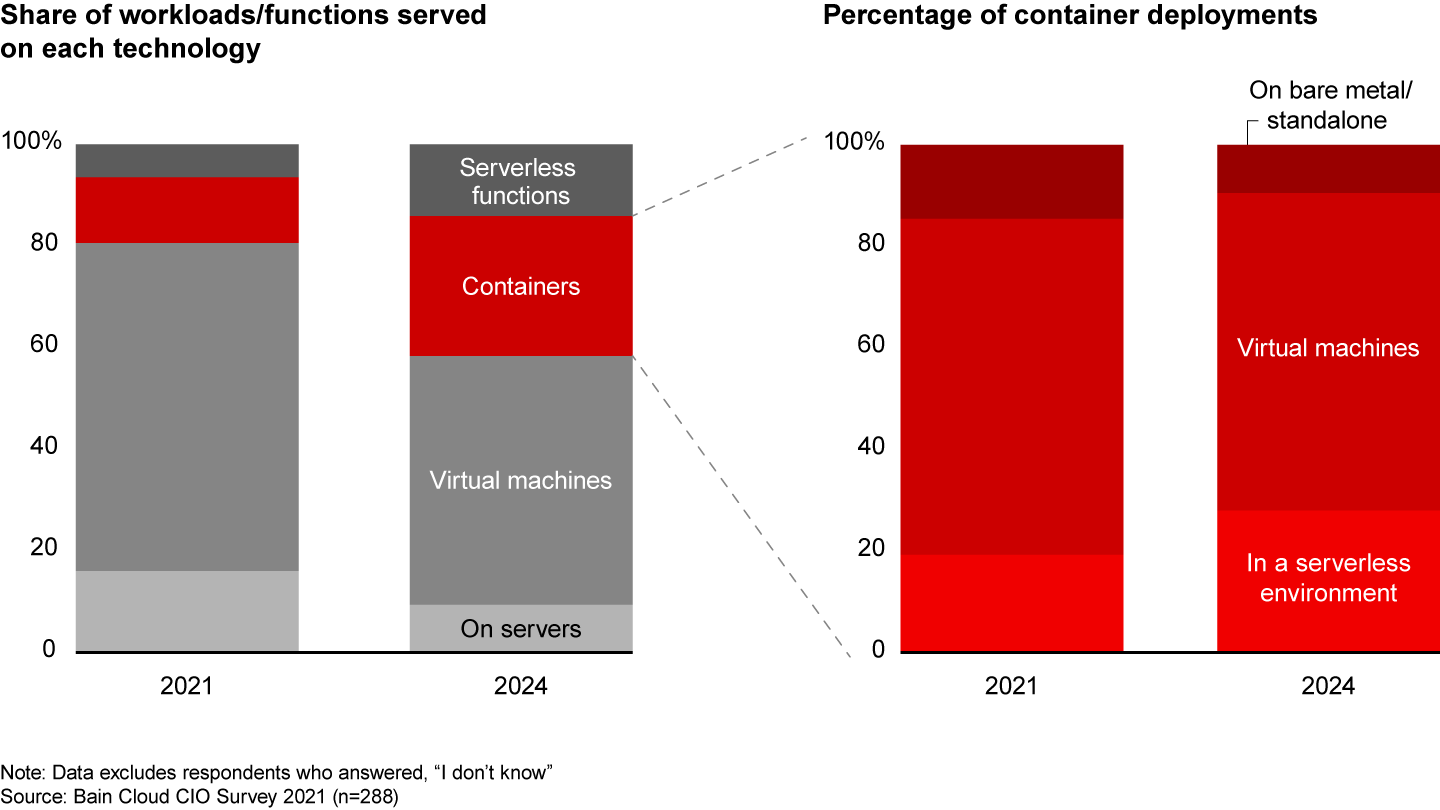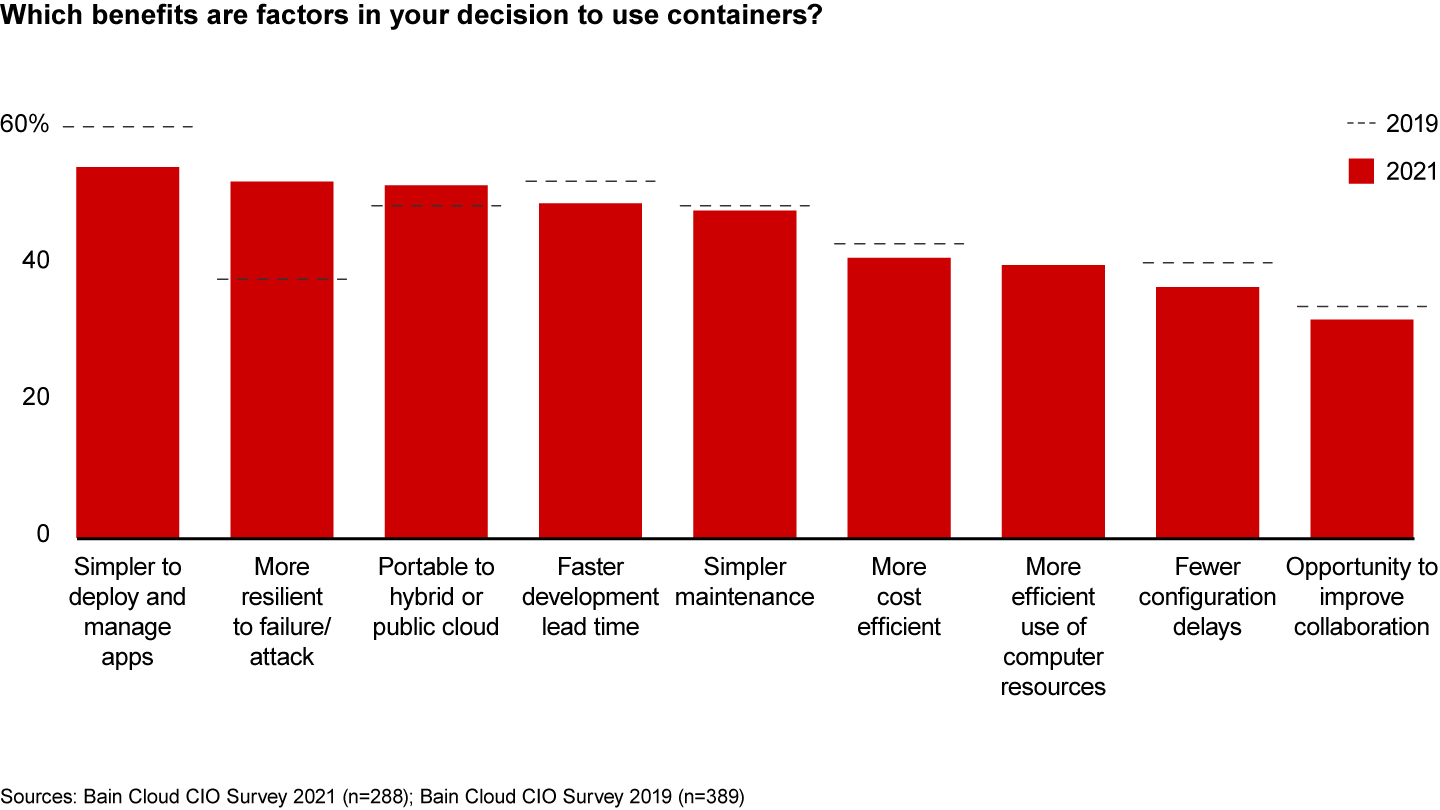Article

As more workloads move to the cloud, more companies have realized that a simple lift-and-shift strategy doesn’t deliver on the cloud’s promises. Companies that just moved their workloads from their own servers to someone else’s servers didn’t gain as much as they hoped.
Real efficiency comes when workloads move to cloud architectures that favor microservices over more traditional approaches. That’s why CIOs and other IT leaders expect to run more of their business on native cloud architectures over the next three years, in part because this enables them to deploy microservices faster and less expensively than otherwise (see Figure 1). Bain’s recent survey of CIOs found that they expect their dependence on containers and serverless functions to grow as much as 30% each year through 2024.


At first glance, this may look daunting to companies that provide virtual machines, which serve about 65% of workloads today, according to the same survey. But the true picture is more nuanced: most containers actually run on top of virtual machines today, so the challenge for these vendors isn’t necessarily to outcompete each other, but to develop services and product lines that tap into these evolving trends (see Figure 2). VMWare, for example, offers its Tanzu suite of products for developing and deploying solutions based on microservices, containers, and Kubernetes, an open-source cloud development platform.


The rise of containers owes much to the solidification of Kubernetes as the industry standard, as well as technologies that allow companies to deploy containers in serverless environments such as Amazon Web Services’ Fargate and Google Cloud Run. Containerization is transforming the way companies build their IT architectures and software products. The market for containers as a service could reach $1 billion by 2024.
Comparing our 2021 and 2019 surveys reveals some changes in CIOs’ attitudes about containers, based on deployment experience. CIOs are increasingly confident about the security of containers, but their expectations of the benefits of simplification and rapid deployment have softened a bit (see Figure 3).


Chief technology officers may be more focused on customer-facing workloads than their CIO peers―and thus may be ahead of the curve in adoption of both technologies. CIOs responded that they have nearly 40% of workloads already running on containers, and they expect that share to grow about 9% annually through 2024.